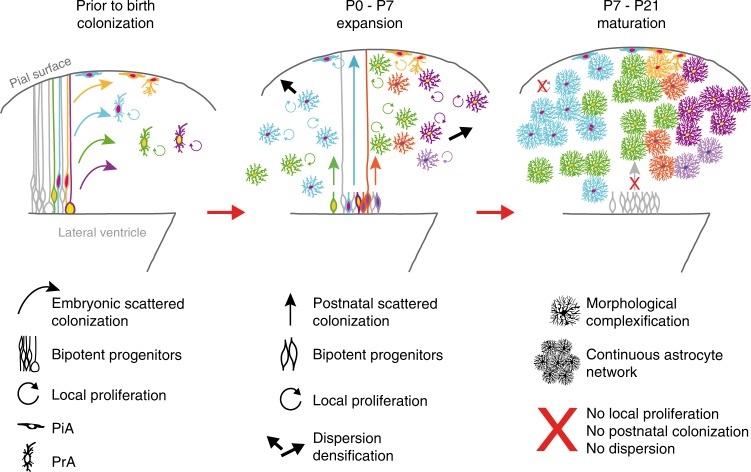Fig. 6.
Comprehensive model for astrocyte development in the mouse cortex. Until now the accepted model of mouse cortical astrocyte development consisted of a first phase where embryonic progenitors colonize the neocortical wall followed by a second step relying on local proliferation of these first settlers after birth, the contribution of postnatal progenitors being debated. Here, we propose that mouse cortical astrocytes are issued from a dual contribution of delaminated embryonic apical progenitors and early postnatal progenitors that both generate pial (PiA) and protoplasmic (PrA) astrocytes. Furthermore, our data show that during the first postnatal week (P0–P7) both pre- and postnatal progenitors scatter throughout the neocortical wall while proliferating. This dynamic phase is followed by a maturation phase (P7–P21) where the clones stop both expansion and proliferation while individual astrocytes increase their volume and the complexity of their processes

